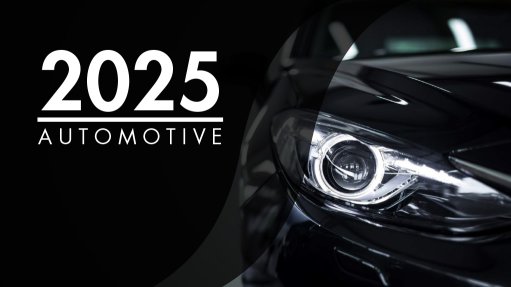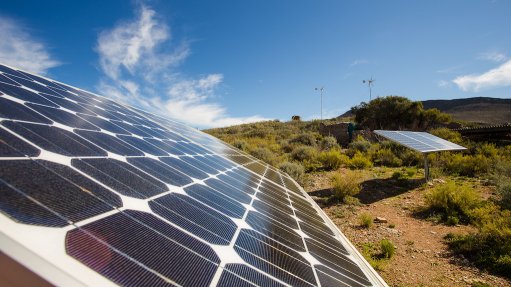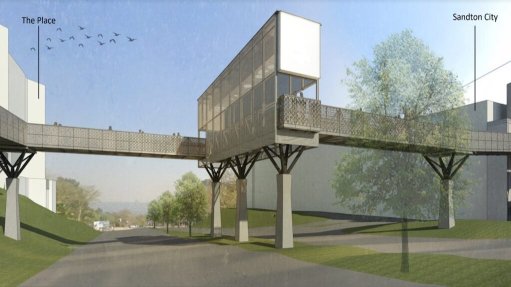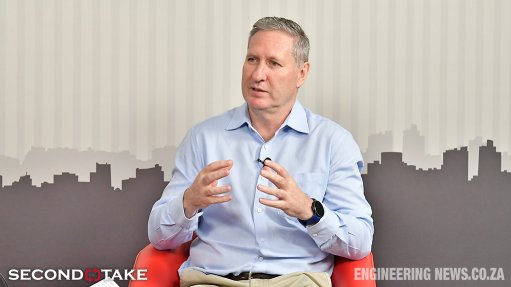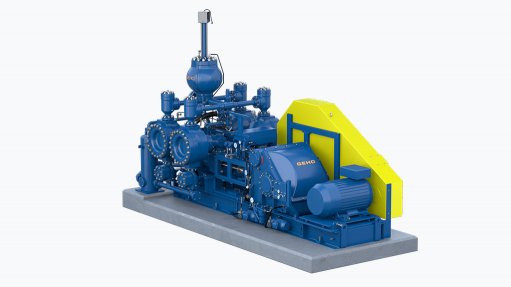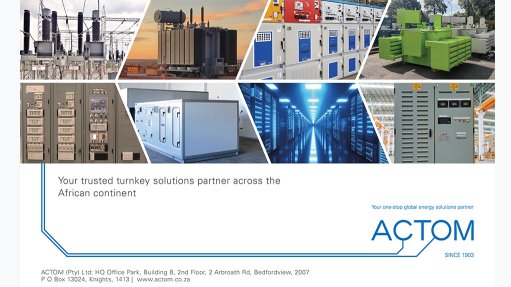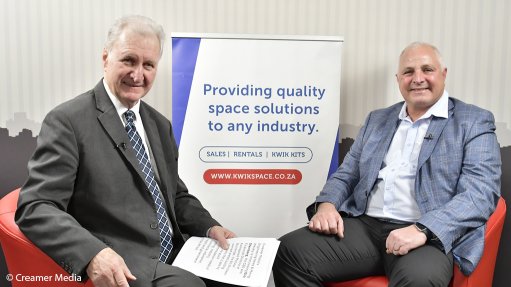Strengthening water infrastructure: Practical models for South Africa
This article has been supplied and will be available for a limited time only on this website.
By: Megan Jarvis - Calvin Nchabeleng and Paula-Ann Novotny, Partners at Webber Wentzel
South Africa faces growing water stress driven by climate change, ageing infrastructure, wasteful losses, pollution, and institutional fragility. These pressures present deep social, economic and environmental challenges that impact communities, industry and long-term development. This article outlines ten project models offering realistic, scalable solutions for municipalities, provinces, and private sector developers. Each model requires careful planning, a clear legal structure and strong regulatory compliance.
1. Captive water projects
Captive water projects involve the extraction, treatment and use of water by a private entity, independent of municipal supply systems. These are typically implemented by mines, industrial parks or agricultural operations located in remote areas. The private entity may develop the infrastructure itself or partner with a third party. While these projects offer greater control over supply and quality, they are capital-intensive and are subject to strict regulatory and permitting requirements relating to water use, treatment and contamination-prevention. Environmental risks, particularly around over-abstraction or community impact, must be carefully managed.
2. Desalination projects
Desalination offers a technological solution to water scarcity in coastal regions. These projects remove salts and other impurities from seawater or brackish sources to produce potable or industrial-grade water. Depending on the scale, they can serve municipal or industrial clients. However, desalination is energy-intensive and requires thoughtful brine disposal planning to minimise environmental impact. Regulatory compliance, especially around marine protection, is essential. These projects are expensive to implement and operate, and must be designed for long-term sustainability and cost-efficiency.
3. Public-Private Partnerships (PPPs)
PPPs provide a framework for government-private collaboration in financing, developing, operating and maintaining water infrastructure and services. Typical projects include wastewater treatment plants, bulk pipelines, or reuse systems, with roles defined according to each party’s capacity and expertise. The public sector generally sets service requirements and performance standards, while the private sector contributes capital, innovation and technical skills. Success depends on a clear legal structure outlining roles, liabilities and risk allocation. Effective procurement processes and public oversight are essential to build trust and ensure accountability.
4. Water User Associations (WUAs)
WUAs are cooperatives formed by water users under the National Water Act to manage shared water resources and infrastructure. These models promote local ownership, improved governance, and coordinated use of shared resources. Success depends on sound financial and organisational systems, mechanisms for dispute resolution, and sustained government support during the early phases. Compliance with water and environmental laws is essential, especially where resources span numerous jurisdictions.
5. Industrial 4R projects
Industrial 4R projects focus on reduction, reuse, reclamation and recycling for non-potable purposes such as cooling, processing or irrigation. These closed-loop or zero-discharge systems can significantly reduce industrial demand on municipal or surface water sources. While they offer long-term sustainability benefits, they carry high installation and operational costs. Compliance with regulatory and permitting obligations is critical, particularly in water discharge or reuse. Public perception and stakeholder engagement must be considered when reused water poses health or safety concerns.
6. Decentralised water systems
Decentralised systems offer localised water treatment and supply solutions in areas not served by reliable municipal systems. These may include rainwater harvesting, boreholes, and/or small-scale treatment facilities tailored to specific communities or housing developments. These systems offer greater resilience and are often more adaptable to local conditions. However, they require significant up-front investment and must meet applicable health and water quality standards. Maintenance and operational oversight can be challenging, particularly in underserved areas where technical skills and resources may be limited. While effective at a small scale, scaling up to serve larger populations can be complex.
7. Independent water providers
Independent providers supply water to areas not adequately served by public utilities. These may include private companies delivering bottled water or operating piped supply systems in informal settlements or peri-urban areas. These providers play a crucial role in bridging service delivery gaps. However, their operations must be appropriately regulated to ensure fair pricing, sustainability and quality control. Licensing is often required, and tariffs must be set at levels that balance affordability for consumers with financial viability for operators. Over-extraction and environmental degradation are also risks that must be effectively managed through regulatory oversight.
8. Off-grid water treatment units
Off-grid treatment units are modular or mobile systems that purify water at the point of use. These systems often use technologies such as ultraviolet light, ozone treatment, reverse osmosis, or solar-powered desalination. They are useful in emergency situations, disaster recovery efforts, or remote locations without reliable infrastructure. While they offer flexibility and rapid deployment, these units can be costly to procure and maintain. They are often dependent on consistent energy supply and require trained operators. In most cases, they are best suited for smaller communities or short-term interventions rather than long-term, large-scale water supply.
9. Water-energy projects
Water-energy projects combine water treatment with renewable energy generation, creating a more integrated and sustainable system. Examples include biogas production from wastewater treatment or solar-powered water purification plants. These projects support the circular economy and improve environmental outcomes. However, they are typically complex and expensive to implement. Success depends on robust technical design, reliable funding and the seamless integration of water and energy regulations, where co-ordination across government departments and regulators is key. Project teams must be equipped to manage both systems, and appropriate contracting arrangements must be put in place.
10. Groundwater banking and managed aquifer recharge
This model involves actively storing excess water in underground aquifers during wet periods and abstracting it during dry seasons. Managed aquifer recharge helps stabilise groundwater levels and enhances drought resilience. Projects should begin with thorough hydrological assessments and require ongoing monitoring. Environmental and community engagement is essential, especially where multiple users rely on the same aquifer. Regulatory authorisations are also required to ensure compliance with water use and environmental legislation. With proper planning and governance, groundwater banking presents a viable long-term strategy for water security.
Regardless of the model selected, several legal and regulatory issues apply across all projects. All water initiatives must comply with national and local legislation from a licensing and statutory compliance perspective, which requires a clear regulatory roadmap to be produced for each project. From an institutional perspective, a clear legal structure is also critical for defining roles, responsibilities and liabilities among all stakeholders, whether public or private.
Risk allocation is another core consideration, particularly for public-private partnerships. Delays, cost overruns, performance failures and environmental risks must be equitably addressed in project contracts. Financing models must be carefully structured, whether based on equity, debt, development finance or public funding.
Projects should also embed strong environmental, social and governance (ESG) principles. This includes conducting environmental and social impact assessments, engaging affected communities and stakeholders, and ensuring equitable access to water resources while securing the sustainable use of water.
With South Africa’s water crisis expected to intensify by 2030, there is increasing demand for innovation and private sector leadership alongside public investment. The eMalahleni Water Reclamation Plant demonstrates the transformative potential of these models. Since 2007, the facility has treated mine-affected water for municipal and industrial users, while also producing valuable by-products such as gypsum.
Despite its success, projects of this nature remain limited, largely due to regulatory hurdles, funding constraints and data gaps. However, recent developments indicate a growing willingness to address these barriers. The establishment of the National Water Resources Infrastructure Agency, signed into law by President Ramaphosa in August 2024, is a significant step towards improving sector coordination and unlocking funding for critical infrastructure. It also signals a shift toward more inclusive and collaborative water governance.
By helping to design and implement viable delivery models, stakeholders can drive sustainable and equitable water outcomes. As South Africa navigates ageing infrastructure, deepening water scarcity and regulatory complexity, well-structured projects can not only meet urgent needs, but also deliver long-term value, social upliftment and environmental resilience.
Water scarcity in South Africa is no longer a distant risk, it is an urgent national challenge. The ten project models outlined above provide a framework of legal, financial and operational solutions for improving access, reducing losses and enhancing resilience. While each model carries its own risks, regulatory requirements and cost profile, they collectively offer a robust toolkit for sustainable water planning.
For practical guidance and detailed recommendations on implementing water infrastructure projects, download our full Water Infrastructure Options and Solutions Guide here.
Comments
Announcements
What's On
Subscribe to improve your user experience...
Option 1 (equivalent of R125 a month):
Receive a weekly copy of Creamer Media's Engineering News & Mining Weekly magazine
(print copy for those in South Africa and e-magazine for those outside of South Africa)
Receive daily email newsletters
Access to full search results
Access archive of magazine back copies
Access to Projects in Progress
Access to ONE Research Report of your choice in PDF format
Option 2 (equivalent of R375 a month):
All benefits from Option 1
PLUS
Access to Creamer Media's Research Channel Africa for ALL Research Reports, in PDF format, on various industrial and mining sectors
including Electricity; Water; Energy Transition; Hydrogen; Roads, Rail and Ports; Coal; Gold; Platinum; Battery Metals; etc.
Already a subscriber?
Forgotten your password?
Receive weekly copy of Creamer Media's Engineering News & Mining Weekly magazine (print copy for those in South Africa and e-magazine for those outside of South Africa)
➕
Recieve daily email newsletters
➕
Access to full search results
➕
Access archive of magazine back copies
➕
Access to Projects in Progress
➕
Access to ONE Research Report of your choice in PDF format
RESEARCH CHANNEL AFRICA
R4500 (equivalent of R375 a month)
SUBSCRIBEAll benefits from Option 1
➕
Access to Creamer Media's Research Channel Africa for ALL Research Reports on various industrial and mining sectors, in PDF format, including on:
Electricity
➕
Water
➕
Energy Transition
➕
Hydrogen
➕
Roads, Rail and Ports
➕
Coal
➕
Gold
➕
Platinum
➕
Battery Metals
➕
etc.
Receive all benefits from Option 1 or Option 2 delivered to numerous people at your company
➕
Multiple User names and Passwords for simultaneous log-ins
➕
Intranet integration access to all in your organisation












